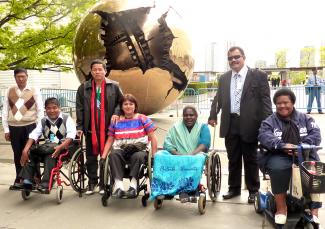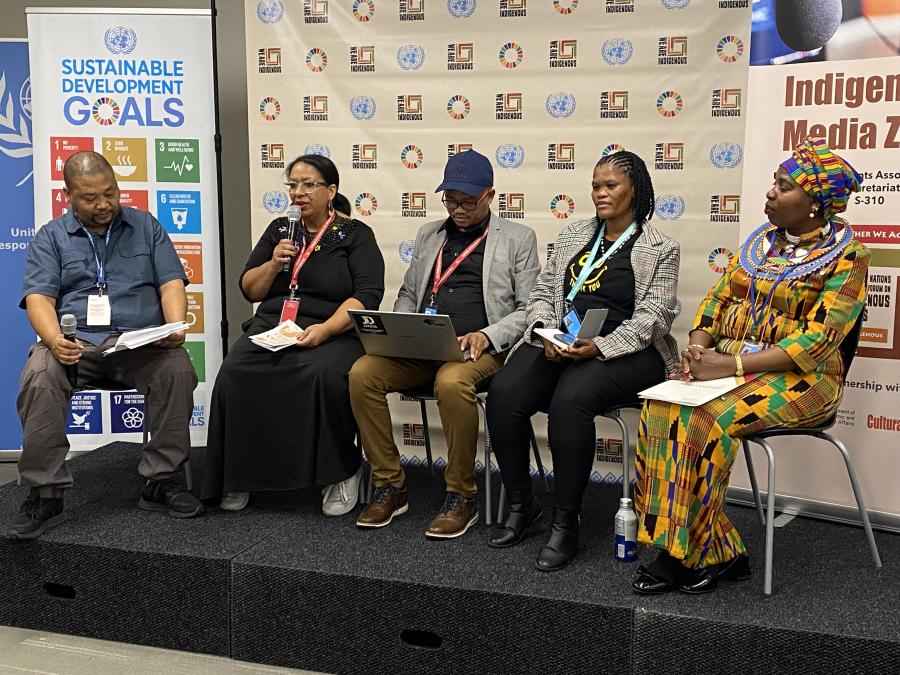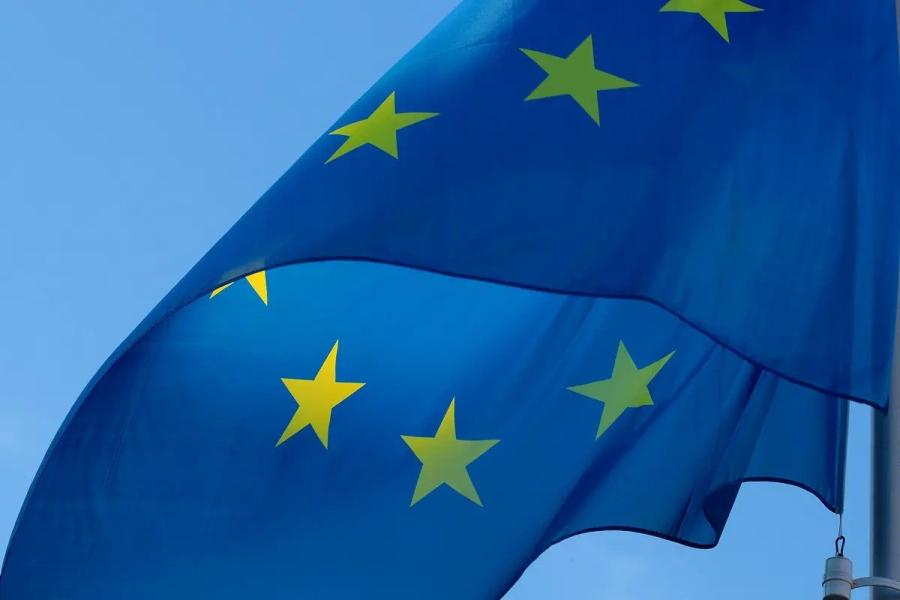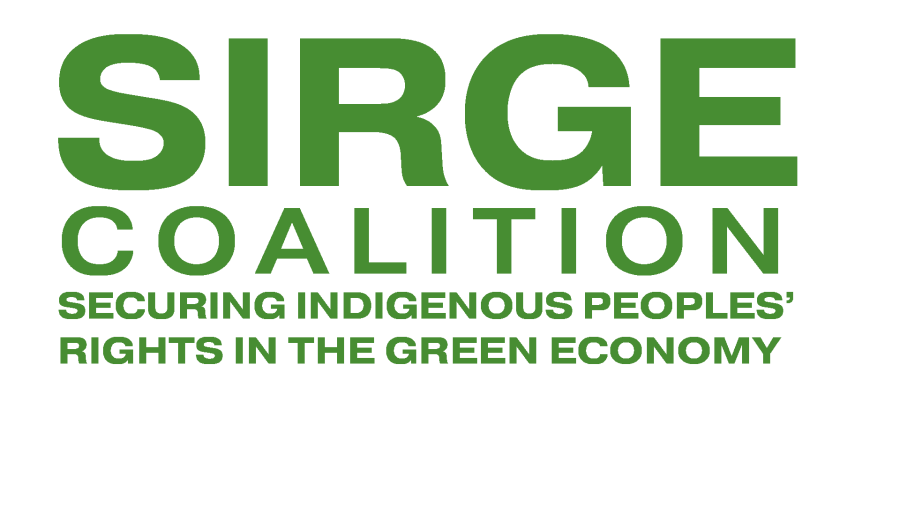
It is estimated that over 1 billion people, about 15 percent of the world’s population, have disabilities. No global data exists regarding Indigenous persons with disabilities, however, the UN Permanent Forum on Indigenous Issues estimates that the number of Indigenous persons with disabilities could be as high as 54 million. Statistics show that Indigenous Peoples are disproportionately likely to experience disability in comparison to the general population, and are likely to face discrimination based on their Indigeneity and disability.
Both the international Indigenous rights and the international disability rights movements have achieved great advances in recent years. In 2007, the General Assembly adopted the UN Declaration on the Rights of Indigenous Peoples. In 2006, the General Assembly adopted the Convention on the Rights of Persons with Disabilities, which entered into force in 2008. Both movements have been active on the rights of subgroups within their constituencies, and the Declaration and the Convention each include rights for Indigenous persons with disabilities, but historically these rights have not been adequately addressed by either movement.
The need for greater attention and promotion of the voices of Indigenous persons with disabilities was the focus of Intersectionality of the UN Declaration on the Rights of Indigenous Peoples and UN Convention on the Rights of Persons with Disabilities in AsiaPacific, a side event at the 14th session of the United Nations Permanent Forum on Indigenous Issues on April 27. The event was co-sponsored by the Indigenous Persons with Disabilities Global Network and the International Disability Alliance.
The international Indigenous Peoples with disabilities movement has gained much visibility over the past three years, due in large part to global organizing efforts led by the US-based Disability Rights Fund (DRF) and the Disability Rights Advocacy Fund (DRAF). “We brought Indigenous leaders with disabilities to the UN Permanent Forum on Indigenous Issues in 2012 and that’s here the seeds for this network began, when they started wanting to establish a global network to get more presence of disability rights issues at the Forum,” said Diana Samarasan, founding executive director of DRF and DRAF.
Aside from establishing the Indigenous Persons with Disabilities Global Network and a Disability Caucus at the Permanent Forum, a major achievement was the inclusion of Indigenous Peoples with disabilities in the World Conference on Indigenous Peoples Outcome Document. Said Samarasan, “We hope to see people looking at Indigenous Peoples with disabilities with more of a rights perspective, moving away from a charity approach. We as a funder really recognize the importance of funding cross-movement work, like the work of the Global Network, because we all have multiple identities. Indigenous Peoples are also women, are also feminists, they are also members of the LGBTQ community, and they’re also people with disabilities.”
“This network achieved a lot at the global level,” commented Vladimir Cuk, executive director of the International Disability Alliance. “It is a very young network, but what they have achieved is really disproportionate to how long they have existed.” Cuk credited the Network with being a bridge between the disability community, which is increasingly referenced in Indigenous rights rhetoric, and Indigenous Peoples, who are referenced in the disability movement, stating that “this is particularly important in [regards to the] post-2015 development agenda and in implementation of the UN Convention on the Rights of Peoples with Disabilities. [We need to] hold accountable and support governments in really implementing post-2015. And for us, the people with disabilities, we will continue to remind [them] of the relevance of the Convention, so that nobody will forget about the government’s responsibilities.”
The Permanent Forum has welcomed the active participation of the Disability Caucus. As Joan Carling, an expert member of the Forum from the Philippines, explained, “The whole UN Declaration also applies to Indigenous Peoples with disabilities. The issue of our collective rights is also an issue of persons with disabilities. The issue of our full and effective participation includes Indigenous Peoples with disabilities, as well as women, youth, and the elderly. We need to . . . make sure that the Indigenous movement is inclusive of Indigenous Peoples with disabilities as well as being mindful to the particular circumstances and needs of Indigenous Peoples with disabilities.” In terms of achieving such inclusion, Carling suggested that the UN assist the Indigenous Persons with Disabilities Global Network and Disability Caucus in promoting the principles of non-discrimination and equality. “We hope that the Caucus will provide more information on the situation of Indigenous Peoples with disabilities, and more importantly identify areas of collaboration with the organizations of Indigenous Peoples with disabilities. Inform us if you have any activities or events that you think it is important for the Permanent Forum to also make its contribution,” she said.
Carling spoke of other possibilities for collaboration, such as participation of Indigenous Peoples with disabilities in the sessions of the Permanent Forum; organizing a special session on Indigenous Peoples with disabilities; preparation of a special report on Indigenous Peoples with disabilities in collaboration with the Forum; raising the issues of Indigenous Peoples with disabilities with UN agencies; and appealing to the UN Voluntary Fund to ensure that it funds Indigenous Peoples with disabilities in every cycle of funding. “There should be at least one or two persons with disabilities that can participate in this Forum, as well as in other sessions where there is funding available for Indigenous Peoples,” she said. Perty Maguru of the Nepal Indigenous Civil Association spoke on behalf of the Disability Caucus, focusing especially the burden of sexual discrimination. “In the context of Nepal, Indigenous persons with disabilities face multiple discrimination and intersectional discrimination. If we see the context of South Asia, the status of women is more vulnerable. They are deprived of services, they are ignored and limited within their home. They are excluded from the Indigenous disability and national organizations, and they are silenced. We find that more that 50 percent of Indigenous persons [have disabilities]. But, the services for Indigenous persons with disability are only 5 percent. [Neither] the State nor the National Federation of Disabled People has any kind of policies and provisions to incorporate the issues of Indigenous Peoples with disabilities. They have a 5-year strategy for 2015–2020. Even though Indigenous Persons with disabilities are rights holders, we are not being incorporated in this 5-year plan. Most Indigenous persons in Nepal and Asia are not aware of the organization. Indigenous persons with disabilities in larger populations are compelled to remain in silence and segregated because they lack education, they lack understanding in issues, and in services. The first thing we want is participation, documentation, and we want to be stakeholders,” Maguru said.
Ipul Powesau, co-chair of the Papua New Guinea Assembly of Disabled Persons, focused on the issues of women and girls and on access to justice and services, particularly education, in Pacific Island nations. “In Papua New Guinea, with a population of almost 8 million people, women are trying to have their issues heard at the national level. When it comes to access to justice, a lot of women and girls with disabilities are raped. They are violently abused by their family members, and the justice they lack is compensation. This is the issue—that our voices are not heard. We don’t have the services that help us to have our voices heard. There are no interpreters, and even the justice system does not have people that are trained to have women with disabilities’ voices heard.”
Some of the recommendations for improving the inclusion of Indigenous persons with disabilities included mainstreaming the Convention on the Rights of Persons with Disabilities; bringing Indigenous groups to disability events; and greater involvement on national and international levels. Samarasan spoke of the Convention as an essential advocacy tool and as opportunity for Indigenous Peoples because it is a legally binding treaty. She gave an example of an Indigenous woman from Mexico with a disability who used the Convention to argue for the establishment of a Disability Rights Commission in the state of Hidalgo: “She made sure the Indigenous voice was a part of this commission. It could be used to advocate for the rights of Indigenous Peoples with disabilities.” Panelists also urged different sectors to work together to build bridges. “We need to bring a human rights approach to the issues, leaving no one behind,” said Maguru.
Read the Convention on the Rights of Persons with Disabilities here: goo.gl/9eXaW8. Follow the Indigenous Persons with Disabilities Global Network at: www.facebook.com/IPWDGN.
Photo: The founders of the Disability Caucus at the UNPFII in 2012 (L-R): Felipe Flores (Peru, second from left) with his personal assistant; Kamala Chakma (Bangladesh); Olga Montúfar (Mexico); Savina Nongebatu (Solomon Islands); Setareki Macanawai (Fiji); and Ipul Powesau (Papua New Guinea). Photo courtesy of the Disability Rights Fund.



